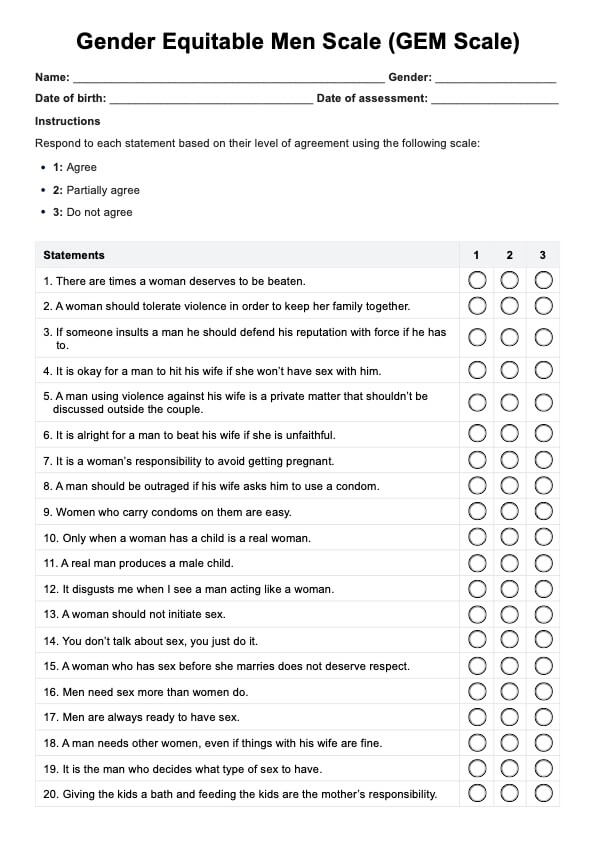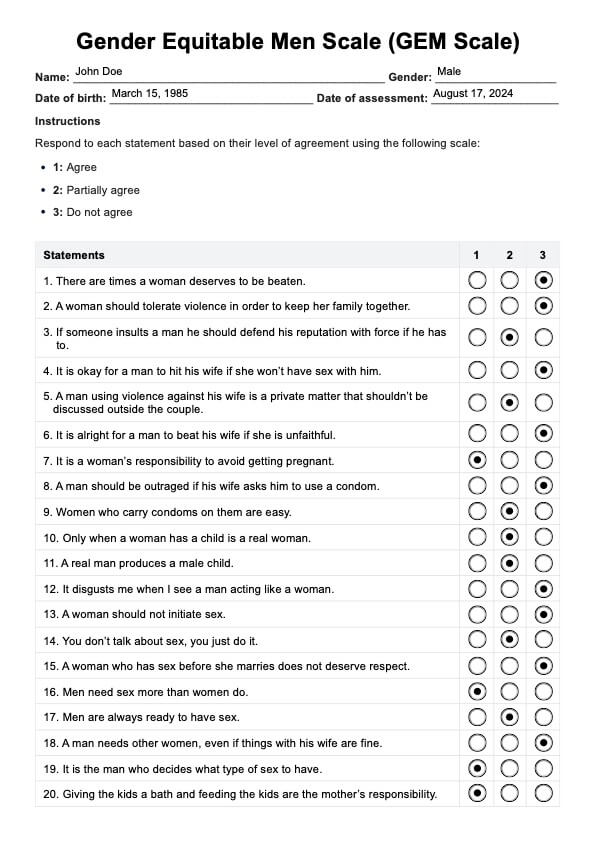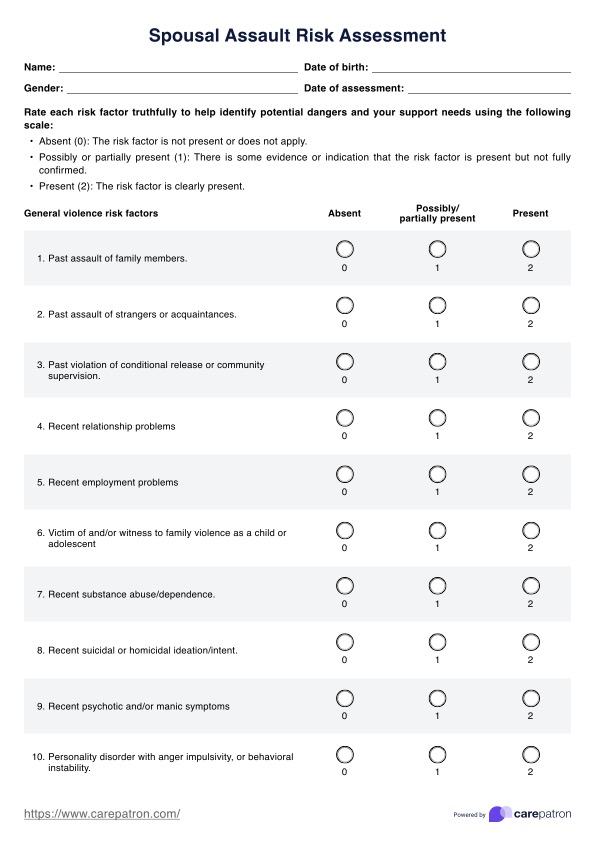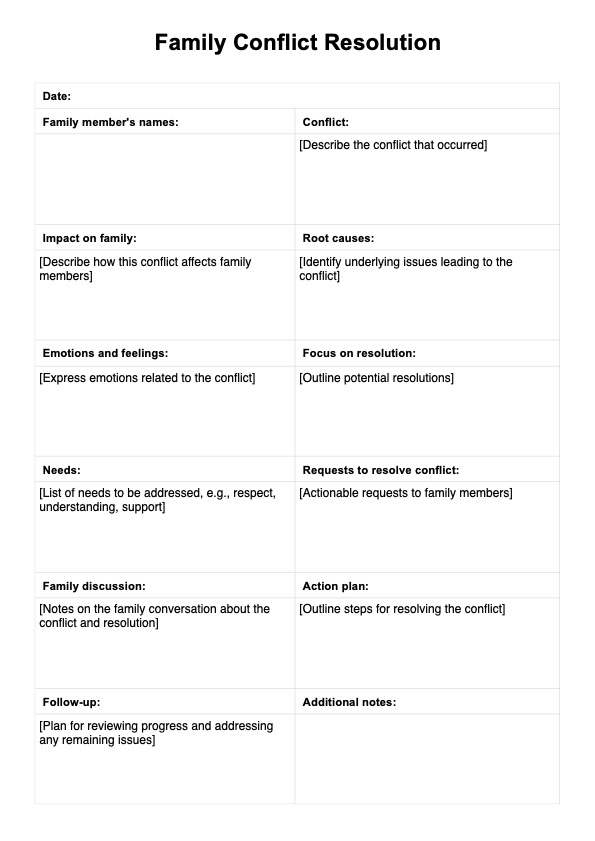GEM Scale
Download a free PDF of the GEM scale to help you evaluate attitudes toward gender norms.


What is the Gender Equitable Men (GEM) Scale?
The Gender Equitable Men (GEM) Scale is a comprehensive tool designed to measure attitudes toward gender norms among men, particularly focusing on equitable and inequitable perspectives. Developed to address the prevalent issues of gender inequality and differing social expectations, the GEM Scale evaluates men's beliefs and behaviors concerning various aspects of life, including sexual and intimate relationships, reproductive health, and domestic responsibilities. By employing a series of statements that respondents agree or disagree with, this gender scale effectively captures the extent to which individuals support gender equality.
The GEM Scale's meticulous design plays a crucial role in measuring attitudes towards equitable and inequitable gender norms, providing valuable insights into how societal constructs influence male perceptions and actions. Its application extends to assessing interventions to promote gender equality. It also allows researchers and practitioners to conduct a psychometric evaluation to determine the effectiveness of programs targeting harmful gender norms.
Moreover, the GEM Scale's ability to highlight attitudes toward reproductive health and intimate relationships makes it an essential tool in public health initiatives. By identifying areas where gender norms negatively impact health outcomes, stakeholders can tailor strategies to address and transform these attitudes. Higher scores on the GEM Scale indicate a stronger alignment with equitable gender norms and a greater endorsement of gender equity, signifying progressive attitudes that support balanced and respectful partnerships.
GEM Scale Template
GEM Scale Example
How to use our GEM Scale template
The GEM Scale by Vu and colleagues (2017) is a valuable tool for healthcare professionals assessing attitudes toward gender norms among male patients. This template simplifies the process, making evaluating and addressing gender-related issues in clinical settings easier. Below are the steps to effectively use the GEM Scale template.
Access and download the scale template
To begin, healthcare professionals can easily access and download the GEM Scale template from the Carepatron platform. Simply log into your account, go to the resource library, and locate the GEM scale template. You can also access the tool from the preview on this page.
Review the scale
It is important to review the template thoroughly before administering the scale to patients. Familiarize yourself with the statements and the scoring system to ensure you can interpret the results accurately.
Introduce and use the scale template with the patient
When introducing the GEM Scale to a patient, explain the purpose of the assessment and how it will be used to understand their views on gender norms. Ensure that the patient is comfortable and understands that the assessment is confidential. Once introduced, guide the patient through the template, helping them complete it if necessary. Afterward, analyze the results to gain insights into the patient’s attitudes, which can then inform your treatment or intervention plans.
Scoring
The Gender Equitable Men Scale is scored by assigning values to responses, with higher values indicating more gender-equitable beliefs. Responses are reverse coded, meaning "agree" is scored as 3, "partially agree" as 2, and "do not agree" as 1.
While the original version of the scale has the inequitable subscale and the equitable subscale, the 2017 version by Vu and colleagues has four subscales. This includes violence, reproductive health and disease prevention, sexuality, and domestic life and childcare. Scores for each subscale are cumulatively summed to generate a total score. This total can be interpreted continuously or categorized into low, medium, and high support for gender-equitable norms, providing insights into the respondent’s attitudes.
Next steps after using the GEM Scale
After administering the Gender Equitable Men Scale, the next step for medical professionals is to carefully analyze the results. Higher scores indicate stronger support for gender-equitable norms, while lower scores may highlight areas where the patient holds inequitable beliefs. Based on the findings, healthcare providers should engage in a discussion with the patient to measure attitudes toward gender norms and how these may impact their relationships and overall well-being.
If the results reveal significant inequitable beliefs, consider referring the patient to counseling or educational programs focused on promoting gender equality and healthy behaviors. Additionally, the insights gained from the GEM Scale can guide the development of personalized treatment plans that address specific issues related to gender norms. Regular follow-up assessments with the GEM Scale can help track progress and reinforce positive changes in attitudes and behaviors.
Reference
Vu, L., Pulerwitz, J., Burnett-Zieman, B., Banura, C., Okal, J., & Yam, E. (2017). Inequitable gender norms from early adolescence to young adulthood in Uganda: Tool validation and differences across age groups. The Journal of Adolescent Health, 60(2S2), S15–S21. https://doi.org/10.1016/j.jadohealth.2016.09.027
Commonly asked questions
The Gender Equitable Attitude Scale is a tool used to assess individuals' beliefs and attitudes towards gender equality, particularly focusing on the acceptance of equitable gender norms. It measures how strongly an individual supports or opposes gender equity in various social contexts.
The Gender Norms Scale is a measurement tool that evaluates attitudes towards traditional and non-traditional gender roles. It helps to understand how individuals perceive and conform to societal expectations regarding gender behavior.
The Gender Equitable Men (GEM) Scale is calculated by reverse coding responses, summing the scores for both inequitable and equitable gender scales, and combining them to produce a total score. This total score can be analyzed continuously or categorized into low, medium, and high support for gender-equitable norms.
The Gender Equality Index Scale is a composite measure that assesses the extent of gender equality across various dimensions, such as health, education, economic participation, and political empowerment. It provides an overall score reflecting a country's or region's progress towards achieving gender equality.




















-template.jpg)



















































































